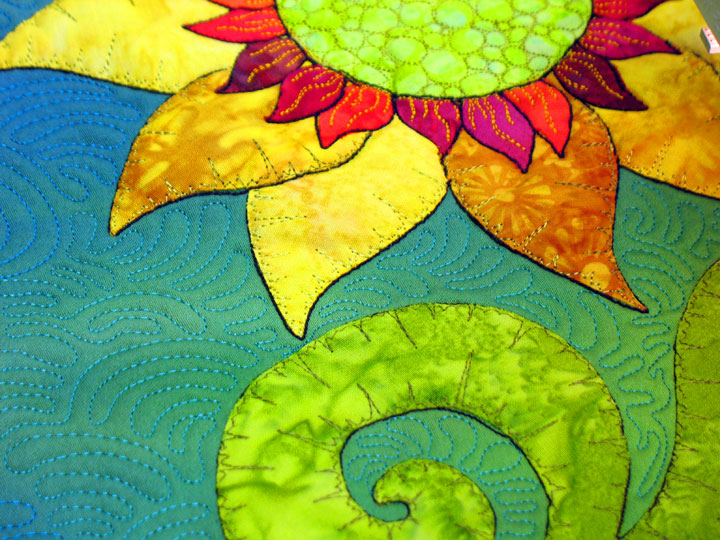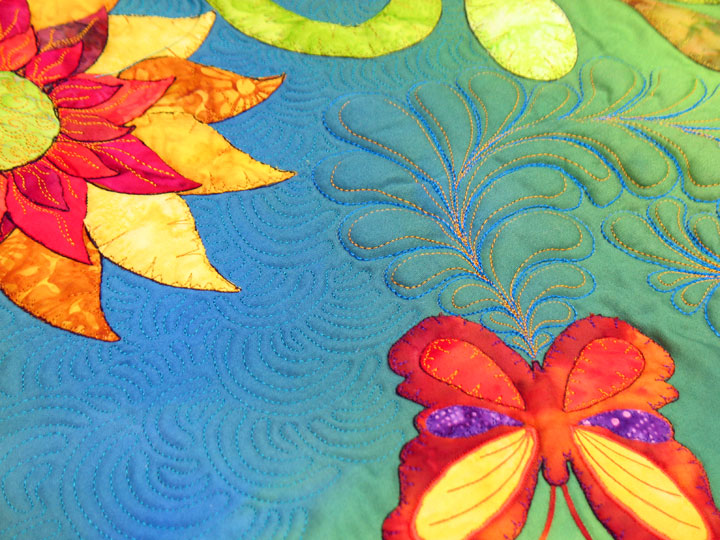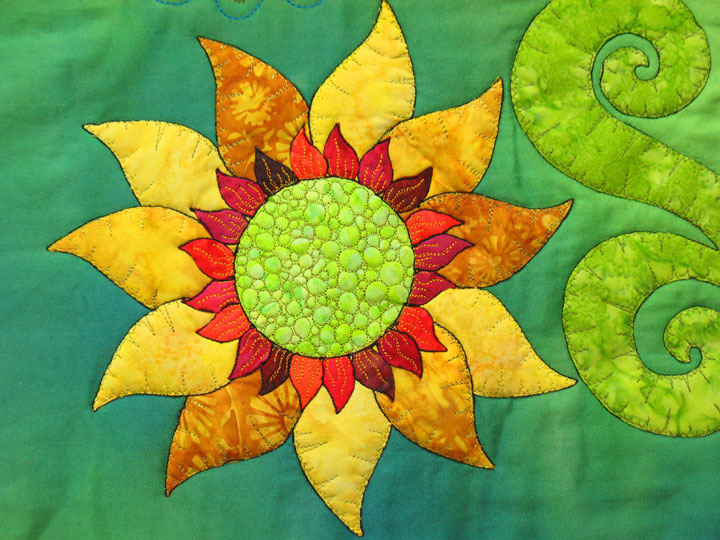Loving It!
I’ve started quilting the background of my Sizzix flower quilt and man, am I ever loving it! It has been so much fun to just sit and quilt and let my mind wander and it is so glorious to work with all these luscious colors! I’m doing a loose version of “igloos” that I call “worms” for the background quilting design…it’s very easy to improvise so long as you stick with curvaceous, worm-like elements and you can move around any applique shapes with ease. As this next picture shows,
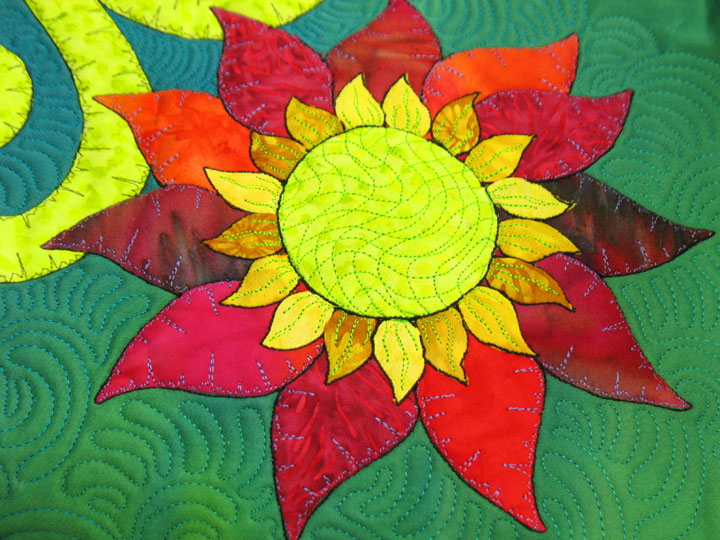 I’m trying to blend my thread colors the same way I blended colors when I dyed this background fabric. If you look closely at the stitching at the far left and then move toward the center, you can see that the thread color changes. My goal with the quilting is mainly to create an interesting texture with some movement to it. I don’t want to create a jarring effect with the thread, so I’m making subtle thread color changes just as the background fabric color changes. You can get a bit of a sense of how the butterfly’s flight path really shows well against the background here:
I’m trying to blend my thread colors the same way I blended colors when I dyed this background fabric. If you look closely at the stitching at the far left and then move toward the center, you can see that the thread color changes. My goal with the quilting is mainly to create an interesting texture with some movement to it. I don’t want to create a jarring effect with the thread, so I’m making subtle thread color changes just as the background fabric color changes. You can get a bit of a sense of how the butterfly’s flight path really shows well against the background here:
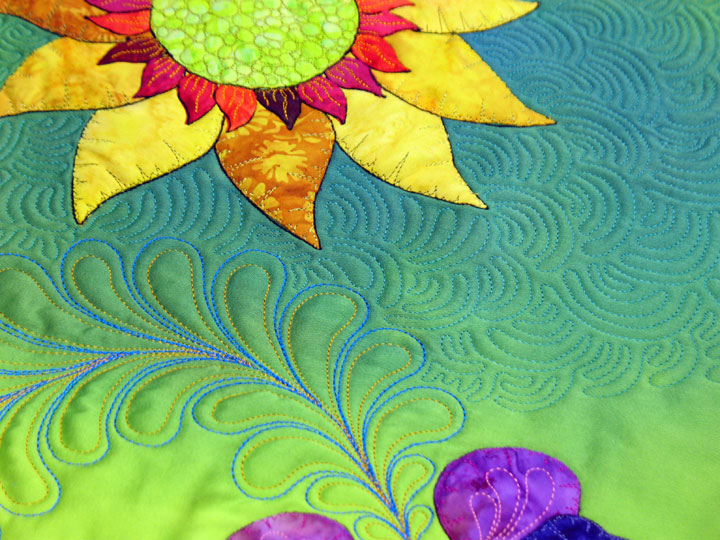 The flight path shows well because there is such great contrast between the 2 textures created by these quilted designs. You can see this even better in this next photo, and that’s because this flight path was trapuntoed:
The flight path shows well because there is such great contrast between the 2 textures created by these quilted designs. You can see this even better in this next photo, and that’s because this flight path was trapuntoed:
It’ll be awhile before I can work on this quilt again because I’ll be traveling to teach out of town for a few days, but let me show you the beginnings of another quilt that I’m piecing…it’s got a long way to go yet!
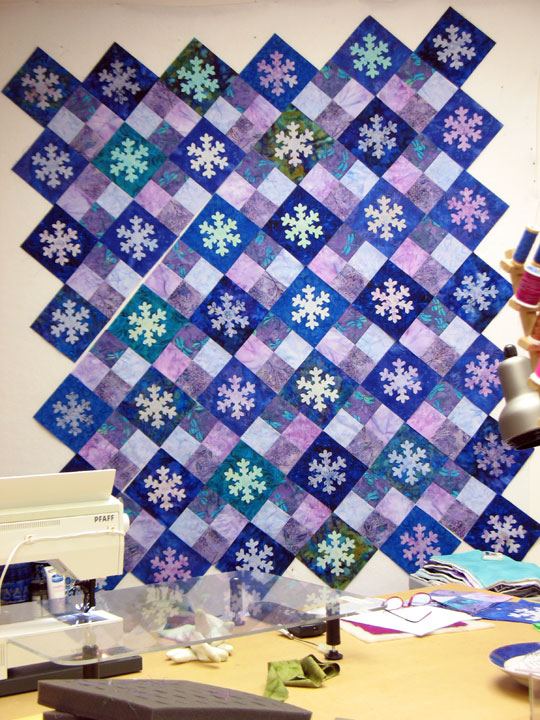 (Try to ignore all the stuff clogging up my quilting table!) Til we meet again…keep on quilting!
(Try to ignore all the stuff clogging up my quilting table!) Til we meet again…keep on quilting!


